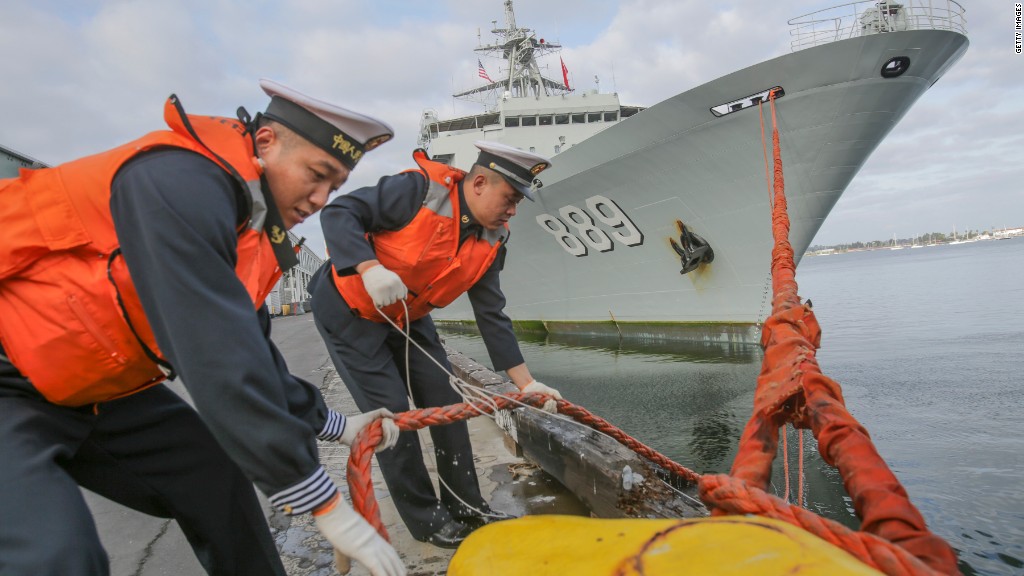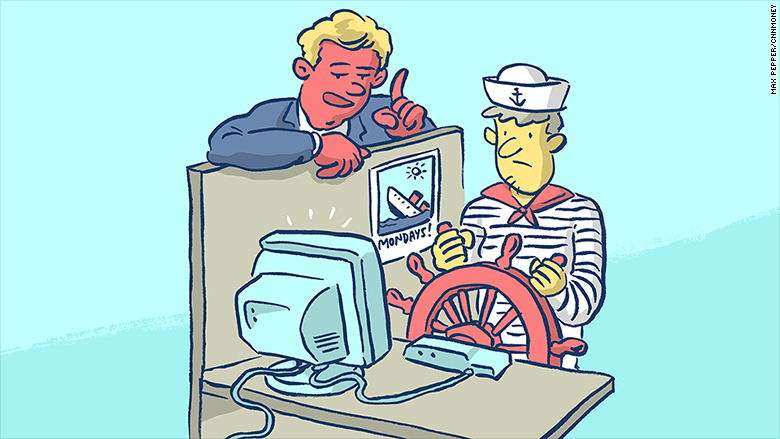
Some sailors of tomorrow will never have to get their sea legs.
These sailors will be seated in office buildings on land, hundreds of miles from their ship, which won't have any humans on board.
Automation is storming the transportation sector, eliminating some jobs and turning others into desk jobs.
Sailors, pilots and drivers are slowly shifting from the high seas, blue skies and open roads to staid office buildings where they monitor vessels from afar.
The shift will improve efficiency, decrease costs and improve worker safety. It's hard to injure oneself in a cubicle. And the environment will benefit from fewer fossil fuels being burned.

Last week, a Norwegian company announced plans to build an autonomous, zero emissions cargo ship. The 75-meter ship will launch in late 2018 as a manned vessel, but be capable of full autonomy by 2020. It will transport fertilizer to larger ports.
Because the ships won't have crews, they won't need cabins sewage systems or a mess hall. Ships will be smaller and lighter, saving on costs, according to Peter Due, a project manager at Kongsberg, which is launching the ship. With no crew on board, there's also no one for pirates to take hostage.
The sailors for Due's automated vessel will monitor it from land. Due described how the sailors would work eight-hour shifts and then go home to their families for dinner. Life would be more typical (unless they have the night shift).
Related: How automation contributed to the rise of populism and Trump
Due doesn't expect all ships to become unmanned. The larger the boat, the less a crew contributes to the overall cost of operating the ship. So automating a massive container ship, for example, would have less appeal.
But a big potential market is tugboats. According to Oskar Levander, the Rolls-Royce vice president of marine innovation, 50%-70% of the operating cost of a tugboat is its crew. The company is developing technology for remote-controlled ships.
Sea Machines CEO Michael Johnson said making harbor tugboats autonomous is the holy grail. Tugboat work can be dangerous. And boating accidents are generally due to human error, making automation appealing.
For now, the Boston startup is working on automating one boat trailing another. It's useful for cleaning up oil spills, or whenever boats work in tandem. Johnson is also interested in autonomous security vessels, to provides eyes and ears on waterways.
Johnson started thinking about automating boats after watching tugboats travel from Seattle to Alaska for the sole task of pulling a barge into a harbor. Wasn't there a better way?
Starsky Robotics, meanwhile, is on the forefront of making long-haul truck driving an office job.
It's developed technology to make trucks self-driving on highways. The cabs will be empty. Drivers located in offices across the U.S. will remotely control the trucks from highway ramps to distribution centers, and vice versa. The trucks will handle the easy part of driving -- highways -- while the humans will take over on the more challenging local roads.
These drivers will be in control for 10-30 minute durations, allowing them to pilot 10 times as many trucks as usual.
"In the future, drivers are going to have to make a lot less sacrifices," said Starsky Robotics CEO Stefan Seltz-Axmacher. "It starts to be a job where there's a water cooler, where people can talk to their buddies at work and use the bathroom and be afforded the decencies that white collar Americans take for granted."
The drivers will need to always be within 1,000 miles of the truck they're controlling, so that the connection between the trucks and drivers is fast enough.
Related: Is Uber's push for self-driving cars a job killer?
Trucks aren't the only place where we may see remote operators.
Google's (GOOGL) Waymo, the leader in self-driving car software, has a patent for remote operators to assist self-driving cars. Humans in command centers would provide advice on how self-driving vehicles should navigate tricky situations, such as right turns on red. And at CES in January, Nissan demonstrated how a car in Silicon Valley could be remotely piloted from a stage in Las Vegas.

A similar script may play out in the skies. Large jets have already shifted from three pilots to two. Some military pilots now sit in trailers in the Nevada dessert, flying huge drones in places such as Afghanistan. There's talk of fully automating cargo flights. The largest barriers aren't technology, but regulation and societal acceptance. Commercial pilots already leave most of the task of flying to autopilot systems.
One question is whether existing workers will want the new jobs that are created. They'll have to be digitally savvy, and comfortable with computer screens and using software. The transition may prove challenging for older workers.
Ultimately, some workers may have no choice but to adapt or become irrelevant.

